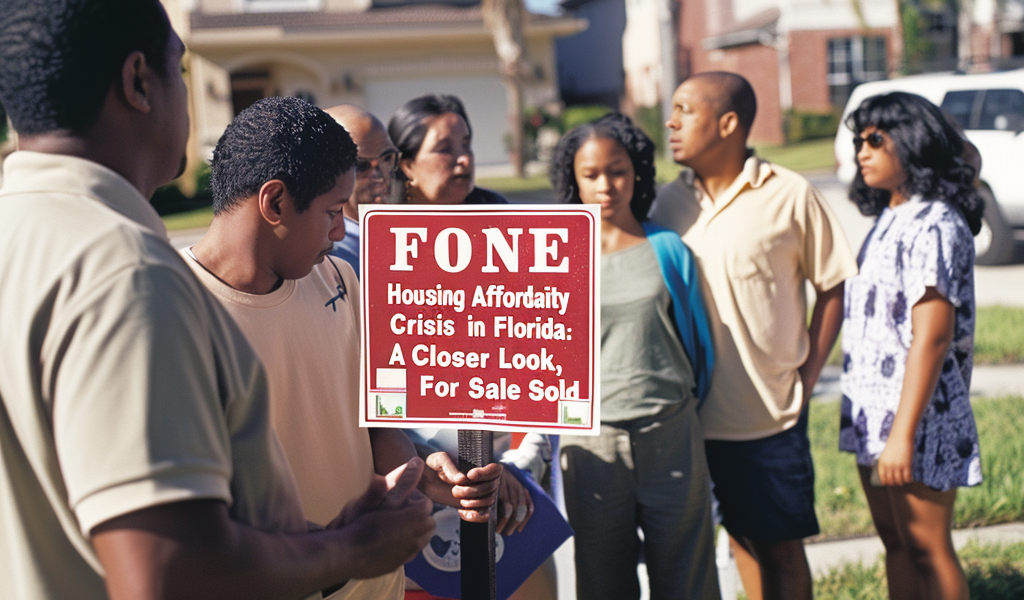The Housing Affordability Crisis in Florida: A Closer Look
The housing market in the United States has been experiencing significant challenges, particularly in Florida, where the affordability crisis has become increasingly pronounced. Since the onset of the COVID-19 pandemic, home prices in the U.S. have surged by nearly 38%, creating a daunting landscape for potential homeowners. This surge, combined with historically high mortgage rates, has rendered homeownership out of reach for many individuals and families.
As of August 2024, the Consumer Price Index for housing remains stubbornly high at 5.4%, despite a decrease in overall inflation to 2.5% from a peak of 9.1% in June 2022. The median list price for a single-family home in the United States reached $437,450 in July 2024, marking an increase of approximately $118,500 since the pandemic began. These escalating prices, coupled with high borrowing costs, create a challenging environment for prospective homebuyers.
In September 2022, the average interest rate on a 30-year fixed mortgage surpassed 6% for the first time in nearly 15 years, maintaining this level for the past two years. The combination of rising home prices and high mortgage rates means that many Americans are finding it increasingly difficult to enter the housing market.
The Income Disparity
While the cost of homeownership has soared, the issue of affordability is also closely tied to income levels. Recent studies indicate that an annual income exceeding $100,000 is often necessary to afford a typical home in the United States comfortably. However, many American workers earn significantly less than this threshold. According to data from the Bureau of Labor Statistics, the median annual wage across all occupations in the U.S. was just $48,060 as of May 2023.
This disparity means that the typical American home now costs approximately 9.1 times more than a typical worker’s annual earnings. In Florida, the situation is even more pronounced. The typical home price in the state is listed at $449,900, which is about 10 times higher than the median annual wage of $45,070.
Variations in Affordability Across Florida
Despite the overall trend of high prices and low affordability, there is considerable variation in housing markets across Florida. The state has 22 metropolitan areas with available data that reveal a wide range of affordability levels. Median home prices in these areas can be anywhere from approximately 7.6 to 17.3 times higher than the median annual wage, showcasing the stark differences in housing accessibility.
For potential homebuyers, understanding the nuances of these markets is crucial. Some areas may offer more favorable conditions for purchasing a home, while others may present insurmountable barriers due to exorbitant prices relative to local incomes.
Identifying the Most and Least Affordable Markets
To provide a clearer picture of housing affordability in Florida, it is essential to identify both the most and least affordable markets within the state. This analysis takes into account factors such as median home prices, local wages, and the overall economic environment.
For instance, certain metropolitan areas may have lower median home prices, making them more accessible to average earners. Conversely, regions with booming economies may see home prices skyrocket, leaving many residents priced out of the market. This dynamic creates a patchwork of affordability across the state.
Market Trends and Future Outlook
As the housing crisis continues to unfold, it is important to monitor trends that may impact the market moving forward. Factors such as changes in interest rates, shifts in the job market, and evolving demographics can all play a role in shaping the landscape of housing affordability.
Furthermore, local governments and policymakers are increasingly recognizing the need for solutions to address the affordability crisis. Initiatives aimed at increasing housing supply, providing financial assistance to first-time homebuyers, and implementing zoning reforms may help alleviate some of the pressure on the housing market.
In conclusion, the housing affordability crisis in Florida is a complex issue influenced by various factors, including rising home prices, high mortgage rates, and income disparities. Understanding the specific dynamics of different markets within the state is essential for prospective homebuyers as they navigate this challenging landscape.





